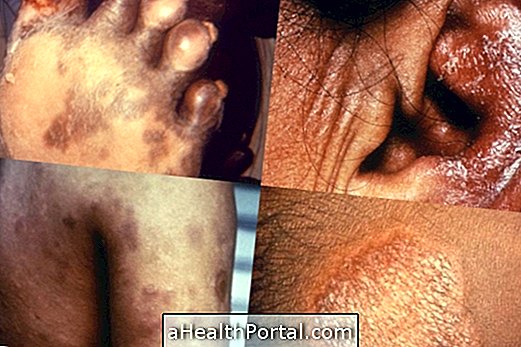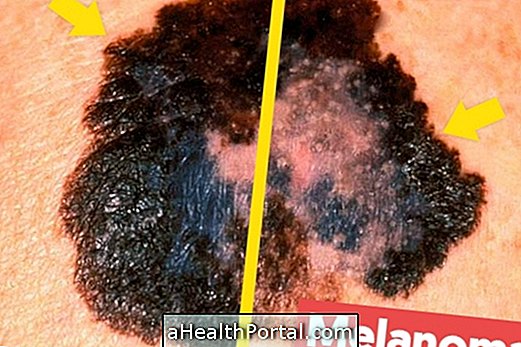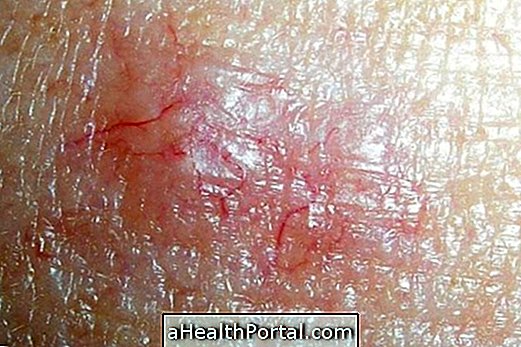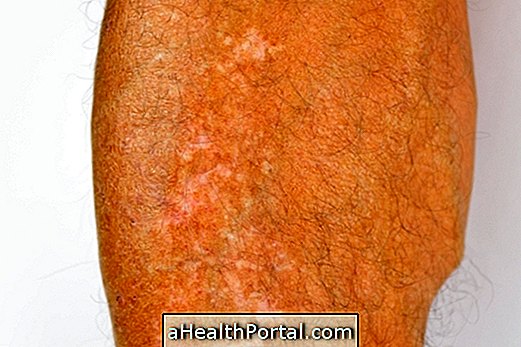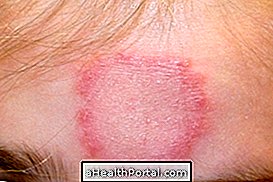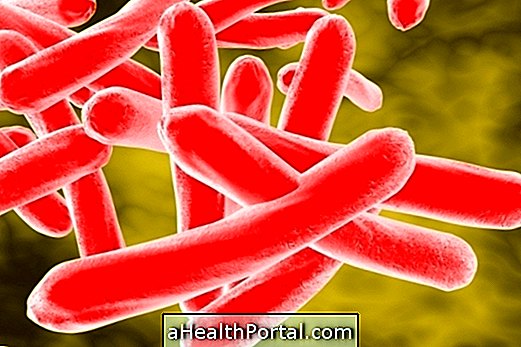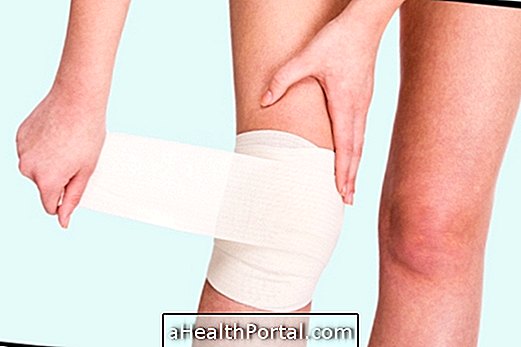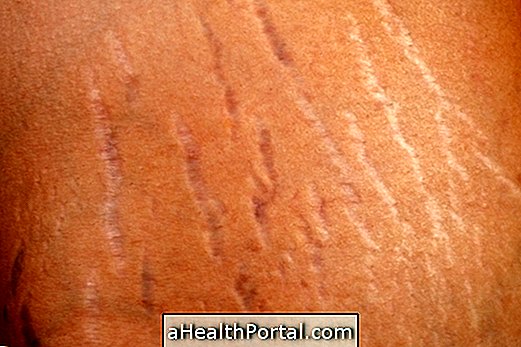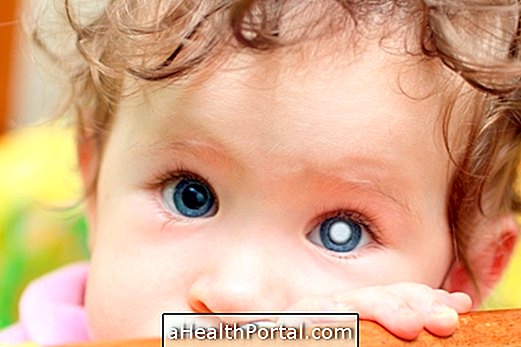Dark spots on the skin are the most common, being caused by excessive sun exposure over time. This is because the sun's rays stimulate the production of melanin, which is the pigment that gives color to the skin, but hormonal changes, drug use and other factors act on the melanocytes that give rise to spots on the face or body.
Learn how to identify and remove the 8 major types of skin blemishes:
1. Dark spots on the face
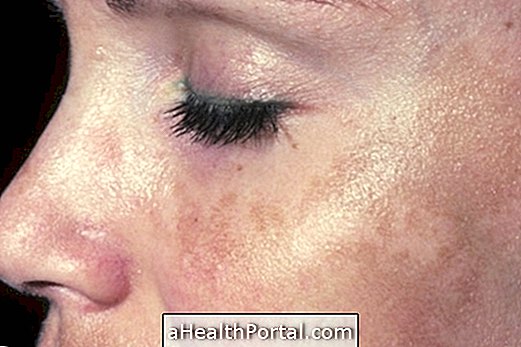
Melasma is a dark spot that appears on the face, close to apples on the face and forehead, being very common in pregnancy or menopause because it is closely linked to hormonal changes. In this case these changes irritate melanocytes that leave darker areas on certain areas of the face. These usually appear or worsen when the person is very exposed to the sun.
How to take it: Spend sunscreen daily with maximum protection factor and avoid prolonged sun exposure, as well as heat sources, avoid getting into hot cars parked in the sun or using the oven, for example. In addition a cream or ointment may be used to lighten the skin. Hydroquinone may be indicated but should not be used for more than 4 weeks. Other options include Vitanol A, cream with acids like Klassis, or Adapaleno, for example.
2. Stains caused by the sun

Sunspots occur most often in light or dark skinned people who are very exposed to the sun without sunscreen. The most affected parts of the body are the hands, arms, face and neck, and although it is more common to appear after 40 years of age, they may also occur in younger people.
How to remove: The clearest and superficial can be eliminated with exfoliation every 2 weeks. When there is a greater number of spots it is recommended to go to the dermatologist to indicate the most suitable products. This is important because when a person has many spots of this type, they have a higher risk of skin cancer and this doctor will be able to evaluate if the spots that they have have this risk or not. The use of whitening creams may be a good option but aesthetic treatments like laser, pulsed light and peeling, also have great results.
3. Red spots on the skin

Dermatitis that manifests itself through red spots on the skin may be a consequence of the onset of an allergy, and can cause brown spots on the skin that itch and may appear after ingesting allergenic foods such as shrimp, strawberries or peanuts, eg after apply products to the skin, such as creams, perfumes or cosmetics, or use objects in contact with the skin, such as bracelets or necklaces.
How to take: A steroid-based cream may be indicated twice daily until symptoms subside. It is recommended to consult a dermatologist to identify the cause of the allergy, so that you can avoid contact with what caused the allergy.
4. Ringworm or white cloth

The white cloth, also known as beach mycosis, arises due to an infection caused by fungus, which causes the appearance of several small whitish spots on the skin. Over time the ringworm is spread through the skin, but usually the person did not become infected on the beach, but after getting more tanned, was able to observe the presence of whitish areas. The cause of mycosis is a fungus that lives in human skin in controlled quantity, but when the person's immune system is compromised, it is common for there to be a greater proliferation of this fungus in the skin, giving rise to mycosis.
How to take it: In this case, it is recommended to apply an antifungal cream to the skin, 2 times a day, for 3 weeks. When the area to be treated is very large, involving all of the back, it may be necessary to take an oral antifungal, such as Fluconazole, under medical indication.
5. Lemon stain or burn

Phytophotodermatitis is the scientific name for skin lesions caused by lemon. It is enough that the lemon comes into contact with the skin and the person is exposed to the sun soon after, that the skin reacts and it can appear a burn or they can become small dark patches in the skin, especially in the hands.
How to take it: It is recommended to wash the skin thoroughly, apply a cream with hydroquinone 3 to 4 times a day, and avoid placing products, such as perfumes or cosmetics, on affected skin. In addition, it is also important to always wear sunscreen over the affected area for effective treatment.
6. Diabetes stains

Acanthosis nigricans is the scientific name for dark spots that appear around the neck, skin folds, underarms and under the breast in people who have insulin resistance or diabetes. However, although it is rarer, this type may also occur in people with cancer.
How to take it: One should consult the dermatologist, who will prescribe whitening creams and identify the cause of acanthosis nigricans. In addition, when it is caused by being overweight, the patient should lose weight because this will facilitate the treatment to standardize the tone of the skin.
7. Vitiligo

Vitiligo is a disease that leads to the appearance of white patches on the skin, especially in places such as genitals, elbows, knees, face, feet and hands. Vitiligo can appear at any age and its causes are not yet known.
How to take it: It is recommended to consult the dermatologist to start the appropriate treatment according to each case. Creams that even the skin tone can be used but the use of sunscreen is essential because light skin is more likely to develop skin cancer.
8. Face stains due to acne

The pimple scar is a very common cause of skin blemishes in young teens, arising mainly after severe acne treatment, for example.
How to take it: A good treatment to standardize the tone of the skin is to pass mosqueta rose oil, 2 to 3 times a day on the scar, avoiding exposure to the sun. But in addition, it is also important to keep skin oil controlled with anti-acne treatments. When the person no longer presents any blackheads or pimples can be indicated treatments to lighten the skin as use of creams with acids, peeling with acids, microneedle and aesthetic treatments like laser or pulsed light.
How to take birthmarks
Birthmarks may be reddish or darker than the skin tone, and generally do not respond well to any type of treatment, being a characteristic that the person possesses. But when it causes a lot of embarrassment, the person can go to the dermatologist to evaluate the treatments that may be indicated, because it will depend on their location and the depth of each stain.
Acid peeling removes the outermost and middle layer of the skin and the laser treatment may be some options indicated to remove this type of stain on the skin. Getting a tattoo by taking advantage of the shape and location of the spot can also be a more positive way of living in peace with the spot.
Care to increase treatment success
The 4 essential care to prevent the appearance of new spots on the skin, and to prevent those that already exist are even darker, are:
- Always wear a sunscreen with a high protection factor before leaving the house;
- Moisturize daily the skin of all body and face, with creams suitable for each type;
- Avoid excessive sun exposure;
- Do not squeeze pimples or blackheads, which can leave dark marks on the skin.
Such care should be taken while treating any type of blemish on the skin.
See in this video some guidelines of the physiotherapist Marcelle Pinheiro to take dark patches of skin:

